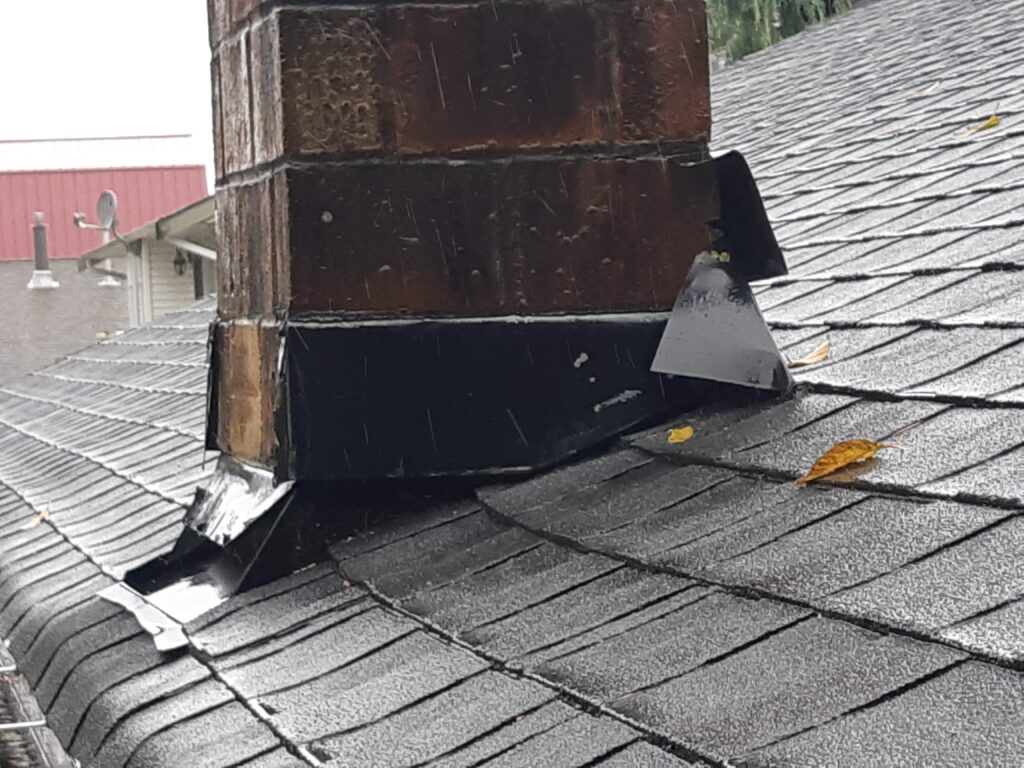- Photo: An inspector will review this composite shingle roof and address concerns about it such as its age, the condition, any observed leaks, roof flashing condition and whether it needs to be repaired or replaced, and when.
- Abstract: Home insurance providers are now requesting homeowners of older houses to have a roof inspection completed prior to the renewal of their insurance policy.
Purpose of a Roof Inspection
During a home roof inspection, an inspector evaluates the roof’s condition to estimate its remaining lifespan before replacement is necessary. This evaluation is important for insurance companies to assess the risk associated with insuring your roof. If your roof is in poor condition, you may face higher insurance premiums or encounter difficulties in obtaining coverage.
Procedure for a Roof Inspection
While inspectors may physically climb onto the roof, especially for insurance purposes, they can also assess its condition from the ground or using a ladder and inspecting from the edge. In some cases, inspectors utilize drones to visually inspect the roof, eliminating the need for direct physical access.
Options for a Roof Inspector
The owner can either hire a roofing contractor or a home and property inspector to perform the investigation. The benefit of using a roofing company is that they can also provide an estimate to replace the roof; however, the drawback is that one cannot be certain that this is an unbiased assessment. The benefit of using a licensed home inspector is that you are assured of impartiality; however, by provincial regulations, the inspector cannot provide you with any repair or replacement costs.
EKAN Roof Inspection
We follow a two step process to evaluate the condition of a roof. That is, we inspect the roof from the exterior and where access is available, by entering the attic. Our reporting format discusses limitations of the inspection, provides a description of the roof and then goes on to present recommendations for any conditions found, their implication, what needs to be done (but not how) and the timeframe within which action should be taken. All recommendations are complemented by photographs. Our roof inspection report is issued within 24 hours and is cloud based, accessible at any time.
EKAN Report
Here is what you can expect to read about in your roof inspection report.
Exterior Condition
Roof Limitations describe how the exterior inspection was performed:
- Weather factors (snow cover, frozen, wet)
- Equipment used (telescopic pole and camera, drone, binoculars)
- Inspector access (roof edge, walking on the roof)
Roof Description identifies the construction and materials used:
- Roof shape (gable, hip, mansard, flat), pitch and area (sq ft)
- Age of the roof (from owner’s documents)
- Roofing material (wood shakes, shingles, metal, torch-on), number of layers
- Roof penetrations (pipes, skylights, chimneys)
- Flashing, vent pipe covers, boots
- Gutters
Roof Recommendations discuss the condition, implication, task and timeframe of issues found such as:
- Shingles (missing, broken, granular loss, cracks, blisters, buckling)
- Flashing (rusted, damaged, pulled away)
- Sagging roof ridge
- Soft or wavy roof surfaces
- Previous spot repairs
- Moss or wood rot
- Clogged drainage
Interior Condition
Attic Limitations identify how the interior inspection was performed:
- No access
- Inspected from access hatch
- Entered but restricted asses
Attic Description identifies the construction and material used:
- Sheathing material (plywood, OSB, strapping)
- Roof support (trusses, rafters)
- Type of ventilation (ridge, soffit, gable)
Attic Recommendations discuss the condition, implication, task and timeframe of issues such as:
- Condition of the sheathing, also called the roof deck (damaged, sagging)
- Signs of water stains on sheathing or leakage (through pipe vents, skylights or chimneys)
- Presence of mold
- Ventilation issues
Tip and Opportunity
In summary, performing a roof inspection on an older house is crucial for maintaining its structural integrity, preventing damage, ensuring safety, and complying with regulations. It’s a proactive measure that can save homeowners money in the long run by addressing issues before they escalate into more extensive and costly problems. An insurance company’s requirement for a roof inspection is like your conscience, a voice in your head, making sure you do the right thing for your own good.

